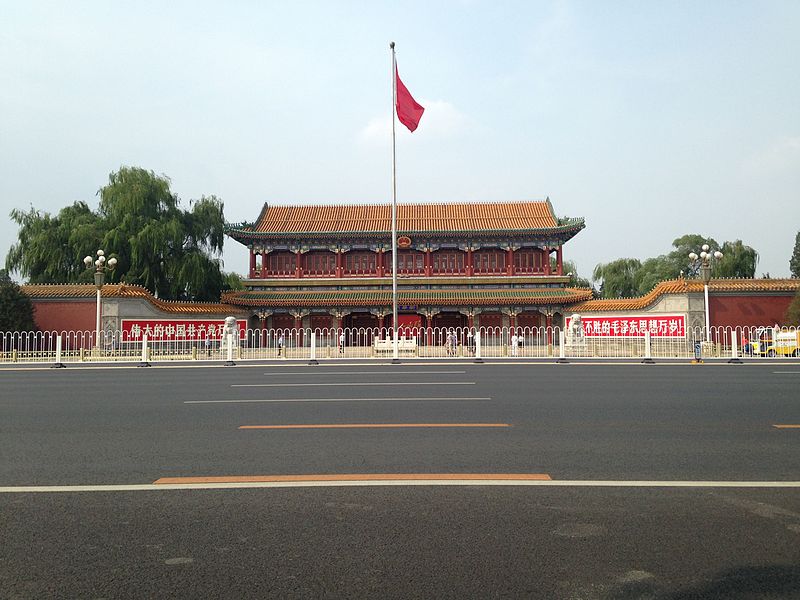China’s “third realm” – the social environment within which the party and society interact – is fast evolving. The instability and corruption that was produced with the rapid implementation of market reforms and liberalizing policies in the late 1980s has resulted in an increasingly centralized China under Xi Jinping.
As the “core” of the party, President Xi has delineated a need to “clean up the party,” centralizing key decision making power in an effort to develop a more “virtuous” class of party officials that is both loyal to the CCP and responsive to the Chinese people. In doing so, the party has made crucial efforts to penetrate the third realm, asserting control over key aspects of society. One of the essential means by which this has been achieved is through comprehensive party coverage and control of the media.
Information manipulation is one of a multitude of asymmetric tools China utilizes to control information dissemination. More critically, coercive state power and censorship has traditionally been one of the fundamental mediums used to spread “positive propaganda” and control public communication. The CCP Central Propaganda Department and State Administration of Radio, Film and Television (SARFT) still retain primary oversight over all media. Television has critically been the most tightly controlled mode of information dissemination. The “Xinhua copy,” acts as the only authorized news reporting agent. This “general copy” subjugates all other news outlets to follow along the 主旋律 or main melody, promoting a dominant interpretation of social reality and ensuring a coordinated articulation and “correct guidance” of the media. The rapid rise of social media and the internet, however, has posed a distinct challenge to centralized information control.
Envisioned primarily as a key tool to market reform and economic proliferation, social media and video-sharing has increasingly acted as a mechanism by which individualism is critically expressed. Consequently, the Chinese government quickly realized that direct intervention and central cyber control over online resources was necessary in formally regulating how citizens engage with the internet and align with party policies. For instance, in an effort to expedite proceedings, instead of passing legislation over media regulations, ministerial “administrative” measures were adopted as a way to curtail debate over constitutional rights and omit the need to go through proper legislative channels. In China, “administrative regulations” simply require State Council (SC) approval and allow for major changes to be adopted immediately.
Mere centralized institutional efforts and cyber policing, however, are not the most significant means of imparting control over a rapidly expanding web-enabled community. Editorial self-discipline is one of the key tools by which China has further been able to quash public expression. This localized and dispersed model of responsibility relies heavily on psychological discipline and the notion that individuals act as their own censor. Intimidation comes to be the primary means by which this is inculcated, with citizens and corporations alike expressing the personal need to control content. For example, telecommunication companies such as China Unicom are held directly responsible for regulating the SMS messages of their users, enforced through state business contracts and state-controlled phone operators. This passive framework of censorship has proved critical in enacting an “effective domination” of the party over all aspects of information dissemination.
Consequently, the initial vision that the internet would empower individuals and expose the wrongdoings of the state has quickly been quashed in China. The “great tool” of democratization has been appropriated by central authorities to further enforce state control and censor information, highlighting a turn to what Ron Deibert calls “digital authoritarianism.” In doing so, this “virtual China” and the perceived linearity in freedom of expression amongst Chinese netizens has effectively been voided. Interestingly however, the means by which this has occurred is through a veil of legitimacy and increased political participation.
Under President Xi, the rapidly centralized development of propaganda and media control institutions have co-opted the effectiveness of social media and the internet to further restrict opinions and optimize the selective disclosure of information. In doing so, beyond restrictive content supervision and technological monitoring measures, community engagement has been utilized as a critical tool of opinion repression. Recognizing that voices expressing political dissent make up over a quarter of online discussions, 31 Provincial State Councils since 2011 have established websites and online forums enabling citizens to send messages and concerns directly to the governor.
As a caveat to this, however, under the 2010 Administration Regulations for the Nation Strengthening Forum on the People Network, communities stated that the Forum reserved the right to delete messages that disobeyed regulations, as such maintaining a channel for discussion at the discretion of the party. Furthermore, since 2017, under oversight by the SC, over 43 million case judgements have been published to a public database, aimed at increasing judicial transparency and the guidance of opinion in legal matters.
Through this increased transparency, the party has effectively built public trust through a means of open communication and the visage of public accountability. In balancing institutional centralized measures of censorship and information control with individual self-monitoring efforts, the party has successfully penetrated the “third realm” and legitimized its direct control over information dissemination by removing its traditionally valued “heavy-handed” approach. In doing so, the party has leveraged social media and the internet to generate a proactive approach to information control and go beyond simple “defensive” measures of censorship.
As a result, information dissemination and simple expressions of opinion in China inherently connote a sense of misinformation. A dual-pronged approach of top-down institutional control and bottom-up self-censorship has meant that veracious discussions and expressions of opinion are met with swift control and harsh crackdowns. China as such has generated a closed channel of information dissemination, generating a culture of misinformation as fact. Legal reform is key in this respect. For instance, through amendments in 2018, Xi’ist thought was enshrined into the Constitution. In doing so, as Pils argues, legal reform and increased media control are seen as means to strengthen the “coercive power of the state”, with reforms institutionalizing this power.
Nowhere is this more evident than in the state’s control of foreign narratives. This “cold treatment” of information is most recently highlighted in online discourse discussing the U.S. Presidential Election results. In this instance, “mocking jokes” and “memes” about the race embellished social media sites, not focused on the result of the election but attitudes of America; a growing cynical consensus on the state of the West and the necessary global leadership of China. In essence, the rise of social media and the internet has “supercharged” the state’s controlling of information and their evaluation of the population’s “trustworthiness,” highlighting a distinct shift to a techno-autocratic system of rule.
Despite this narrative, social media has empowered Chinese citizens in their expression of individuality and perception of autonomy. With this veil of increased “democratization,” one key phenomenon that has arisen is that citizens are able to “negotiate” the state, toeing a fine line between political correctness and attempts of voicing personal opinion. No longer is the party line rigid but rather malleable, and able to adapt to current contexts. As a result, new realms of expression have proliferated, one of the most interesting being Zimuzu’s: online peer-to-peer subtitle translation groups. Within these forums, moderators are able to input personal opinion and adapt content for particular local audiences, changing brands and jokes for greater effect. This perceived autonomy amongst members highlights a growing individualism in China, one existing between commercialization and state control. Despite this, the groups operate within a specified grey-zone in Chinese law. Self-censorship is key in maintaining their presence, with multiple sites being shut-down or administrators jailed if content is seen to violate any of the 40 topics banned by the party or directly “[attacking] the CCP.”
This phenomenon and the consequential notion of participation and individual online autonomy amongst netizens in China has profound implications. The first being; to what extent is “disinformation” experienced in China? Does the extent of information control actually alter reality to the extent to which public censorship is no longer perceived as information manipulation? The blatant omittance of opinion and production of misleading content under the Western “golden standard” delineates that there is no other means by which to understand this centralized control of information. On the other hand, when understanding the Chinese context free of applied modernization and Westernization normative contexts, this limited political participation and ability to “negotiate” with the state has constituted a drastic shift away from a sole negation of information by the party. Despite being incomprehensible to many audiences, this continual control is argued by scholars as being a necessary state-building tool, one capable of realizing social stability under President Xi’s “Chinese Dream.”
This notion is explicitly highlighted through the identifying of institutional apparatuses and attitudes. As assessed above, the party is increasingly providing mechanisms by which citizens are able to engage the government and express individual opinions. These means serve the purpose of increasing citizen trust and perceived autonomy whilst legitimizing the party’s increased media crackdown. This shift, however, further highlights one of the inherent contradictions in party policy. To keen observers, this openness simply allows citizens to expose the weaknesses of the state in penetrating society; the limited ability of the party to inculcate a stronger moral code and uniform ideology divulges a fragmentation and weakness in leadership. To what extent this will lead to a bubble in party power remains to be seen.
Cover image: Xinhuamen Gate of Zhongnanhai across Changan Street (2015), by Soramimi via Wikimedia Commons. Licensed under CC BY-SA 4.0.
Disclaimer: Any views or opinions expressed in articles are solely those of the authors and do not necessarily represent the views of the NATO Association of Canada.




